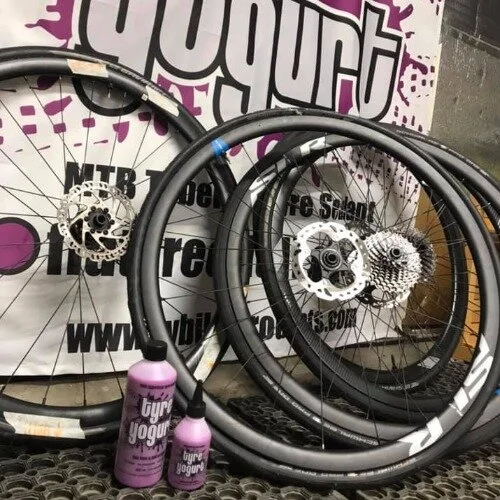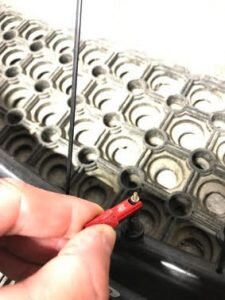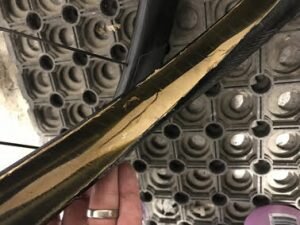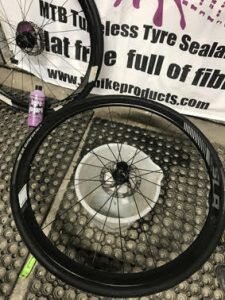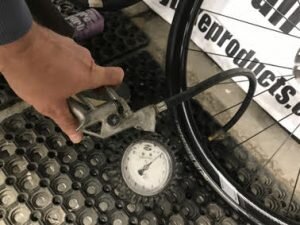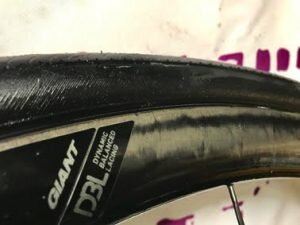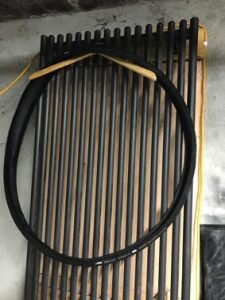Game changer for Tubeless Tyres!
(Buzz Performance – Amelia Pearson – 25th January 2020) Over the past few years there has been a lot of discussion about the pros and cons of using tubeless tyres on the road.
Buzz Performance‘s head coach Amelia has been riding them for a couple of years and so far, is really impressed.
If you are thinking about making the change, have done some research and are, like many others, still sitting on the fence, then read on, this post may just convince you to make the change. But first things first, let us recap for you the pros and cons of tubeless Vs clincher types, just to save you time if you haven’t dived into your own research:
Cons:
Friction between tube and tyre can increase roll resistance
Prone to a range of punctures
Clinchers (Tubes) Pros:
Relatively easy to fit and change when you have a flat if you have practiced this before.
Huge choice in brand, size, grip and quality
Cons:
New wheels may be required to upgrade to tubeless
Limited choice if tyres, although more brands are now making tubeless road tyres
Can be messy
Lack of universal standards
Can be difficult to install
Still need to carry a tube in case sealant doesn’t seal hole
Sealant can dry out after a period of time and also become sticky
Need to replace sealant every 2 to 3 month
Tubeless Pros:
Thicker tyre walls, less punctures and increased durability
Less roll resistance
You can run lower tyre pressure for the same roll resistance and performance, but better handling and comfort
You get wider rims, so more contact with the road and better performance
So, to summarise the above, we can safely say that tubeless tyres offer better all-round performance and less punctures than the clincher tyres, but also present a number of issues that may or may not be deal breakers for you, when considering which type of tyre to go for.
Buzz Performance has recently been approached by Jon Dredge, one of the founders of TY Bike Products to assist the company with testing their tyre sealant product Tyre Yogurt. Unlike most tyre sealants, Tyre Yogurt is not latex based and does not dry, separate or clump. It makes a physical seal to block holes with millions and millions of tiny fibres (the same ones used in car tyre manufacture and bullet proof vests)
Tyre Yogurt contains ingredients that feature in sealants with a proven track record in the industrial, commercial and military sectors. These ingredients are blended to make a sealant specific for bike tyres.
In the past we have found that tubeless tyres have been great until they puncture and that’s where the fun begins. We have had few punctures but when they do happen the effectiveness of the sealant has been inconsistent. Obviously, the size of the hole, the nature of the puncture and the quality and condition of the sealant will play a role, however, the process for repairing the tyres to date has been hit and miss and often messy.
Jon has demonstrated how Tyre Yogurt works and showed some of the tests that he had completed on the tyres, which to be honest blew my mind. At one stage I saw Jon drill a 4 mm drill bit into a tyre with 100 psi, the tyre sealed and held to 80 psi so was ride-able without any further air required!!!! That’s impressive.
Now it’s time to test Tyre Yogurt out on the road, which is what we’re doing.
If things go well TY Bike Products may have helped to eliminate a number of the cons for using tubeless tyres:
Tyre Yogurt is not messy, doesn’t dry up, can be reused, is water washable and contains no latex or ammonia
If Tyre Yogurt is as effective in the field as it is in the work shop then it eliminates the need to carry a spare tube with you.
Type Yogurt does not get sticky or dry up and does not need to be replaced every 2 to 3 months
It is also worth noting that Continental have just released a new tubeless tyre the Conti 5000’s, as the popularity of tubeless tyres grows so will the variety of tyres on the market.
Jon has also offered the following tips to assist when installing a new tubeless tyre:
1. Unpack the tyre the day before and leave in the warm place
2. Remove the core of the valve using the specific tool, pliers or a small spanner
3. If reusing a tyre ensure you clean out the chunks of dried up latex sealant which may be present in the tyre
4. Fit the tyre as normal using soapy water on the tyre bead
5. If you have access to one, use a compressor to force air into the tyre allowing it to bead to pop into the rim
6. Add 60 – 70 ml of Tyre Yogurt to each of the tyres and inflate as normal
7. Ensure the tyres are beaded evenly around the rim, if not deflate use more soapy water around the rim and inflate again
Pro Tips:
Inflating a tube inside the tyre and leaving it overnight is a great way to prepare the tyre for installation.
Shake and bounce the tyre to allow Tyre Yogurt to spread along the bead and sidewall, this will continue to happen when the bike is ridden.


